MedievalReporter.com
Covering history's most marvelous millennium
Join our newsletter!

Covering history's most marvelous millennium
Covering history's most marvelous millennium

How did armies during the Rise of Islam conquer such a vast selection of christian lands? What was jihad in the first place? Who were the colorful commanders that led it to the West?
Grab a short intro to the Empire of Islam from our Medieval Guidebook.
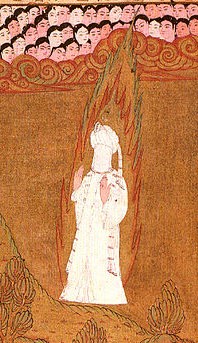
Islam was founded by its last and final prophet, Muhammad. Born in 570 CE, the man was not only a gifted and persuasive speaker. Contrary to most prophets, he had a knack for military matters.
Muhammad conducted nearly a hundred military expeditions. Soon, a warrior mentality developed among his followers. From the start, Islam contained the idea that it was to be spread “by the sword” as well as “by the book”.
This concept was called jihad (Arabic: جهاد). Originally, the word meant little more than “struggle”. But its more aggressive interpretations quickly became part and parcel of early Islamic ideology, too.
The death of the prophet then turned out to be the start, rather than the end, of the jihadi movement.
– advertisement –
– article continues below –
Inhabitants of the Mediterranean seaboard soon found out the way Muhammad’s followers explained jihad. Fueled by their new creed, muslim warriors successfully and rapidly expanded their new empire.
Under the command of a caliph, the official successor of the Prophet, they conquered vast regions that had previously belonged to the Byzantine and Sasanian (or Sassanid) empires. Within twenty years of Muhammad’s ascendancy into the heavens, Arab armies had taken over control of Egypt. It had been firmly in Roman/Byzantine hands since the times of emperor Augustus.
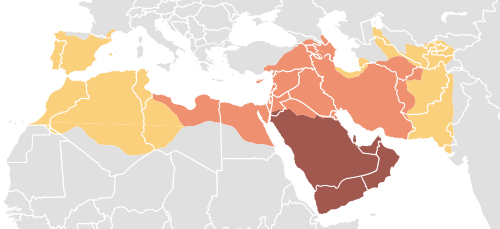
Riding on camelback, they had no qualms about pressing ever westward along the sandy shores of the Southern Mediterranean. Over time, this region would become known as the Maghreb or al-Maghrib (Arabic: المغرب) – simply meaning “the West”. Using the Nile delta in Egypt as a launchpad, the caliph ordered his soldiers to attack the Byzantine territories there.
When Muhammad died in 632 CE (11 AH), the Byzantine or Eastern Roman Empire controlled more of North Africa than just Egypt. Centered around Carthage, they had installed an exarch (‘viceroy’) in the area. His control reached from the southern regions of present-day Portugal to the Lybian coast.
With Egypt quickly devoured, the muslim armies soon turned their attention to this Exarchate of Africa. The Byzantine client state was buckling under theological disputes and the stream of refugees coming in from muslim-conquered Egypt. It was not having an easy time when jihad knocked on its door.
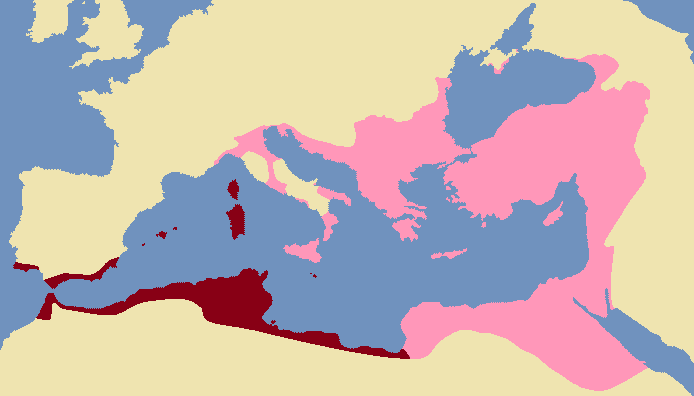
The Arab commander marched west at breakneck speed. Around 680 CE, less than fifty years after Muhammad’s death, he reached the Atlantic coast.
This staggering rate of progress was only possible because the Arabs initially didn’t conquer everything on the way. As a result, on their way back from the ocean, they were ambushed by a combined Byzantine-Berber force in 682 or 683 CE. (The Berbers are an indigenous people of North Africa.)
“O God, if the sea had not prevented me, I would have galloped on forever like Alexander the Great, upholding your faith and fighting the unbelievers!”
The apparently not so modest muslim commander upon reaching the shores of the Atlantic Ocean
Because his campaign towards the Atlantic had been such a breeze, the leader of the Arab units had not expected such stiff resistance. But the Berbers and Byzantines tenaciously clung to the idea of a christian North Africa. The Berber king personally killed the Arab commander on the field of battle.
The armies of Allah scattered to the wind. The Arabs were beaten back to where they started: the Lybian coast. The Exarchate was saved – for now.
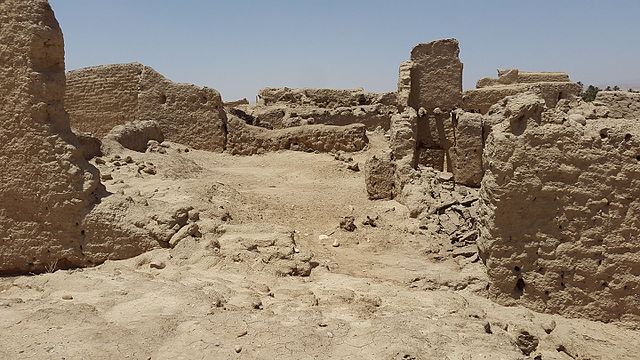
Because of internal struggles, it took the caliphate a while to muster a response. But when the Islamic wind started blowing west again, it blew in full force.
The caliph sent a huge host westward to finish the mission in the Maghreb region. The jihad now targeted Carthage, the Byzantine capital in the region, as soon as it could. The invading force was so large that its inhabitants simply declined to defend the city and departed for Sicily.
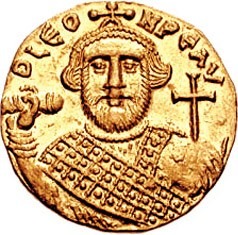
The Byzantine emperor was not going to let this slide, though. He came to the rescue of his client state with a strong fleet. The Arabs were forced to give Carthage up again.
This time, the armies of Allah regrouped faster than after the ambush at Thouda. Within the year a fierce battle took place under the walls of Carthage. Determined to decide the fate of North Africa once and for all, neither side offered terms. This was a fight to the death.
Now it was the Byzantines’ turn to deal with internal struggles. It cost them dearly. The forces of jihad triumphed. Carthage fell in 698 CE.
To prevent the city from going over to the enemy again, the Arabs completely destroyed it. After more than seven centuries, Roman and Byzantine control over the region was broken. It would never return.
– advertisement –
– article continues below –
The forces of Islam completed the conquest of the Maghreb within the first century of their new religion. Meanwhile, across the Mediterranean, the Iberian peninsula looked like a luring prize. It was completely under Visigothic control by the time the Arabs knocked on its door.
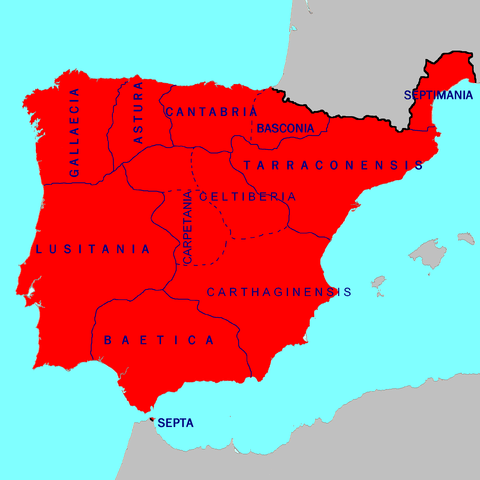
The Visigothic king understood the threat radiating from the caliph’s court. He had already sent a detachment to the Byzantines to help out with the defense of Carthage. Their efforts in vain, the Visigoths knew they were next in the crosshairs of Islam.
At the time, the Visigothic kingdom was divided. The king had spent considerable resources on an unpopular campaign against the Basques in the north. Unruly nobles presented a continuous challenge to his authority.
To present a coherent line of defense against the Arabs would be a daunting task.
“Burn the boats.”
The Islamic commander after landing on the southern shores of Hispania (Spain).
When the Islamic governor of Africa crossed over to Spain, he went straight for his target and joined battle with the Visigothic king as soon as he could. The latter was immediately betrayed. Part of his army sided with the invading host. The king was killed on the field.
Within five years of traversing the Pillars of Hercules, now known as the Strait of Gibraltar, the caliph’s columns conquered the entire Iberian Peninsula. Less than a century after the prophet’s passing, his official successor ruled in Egypt, the Maghreb and the Iberian Peninsula.
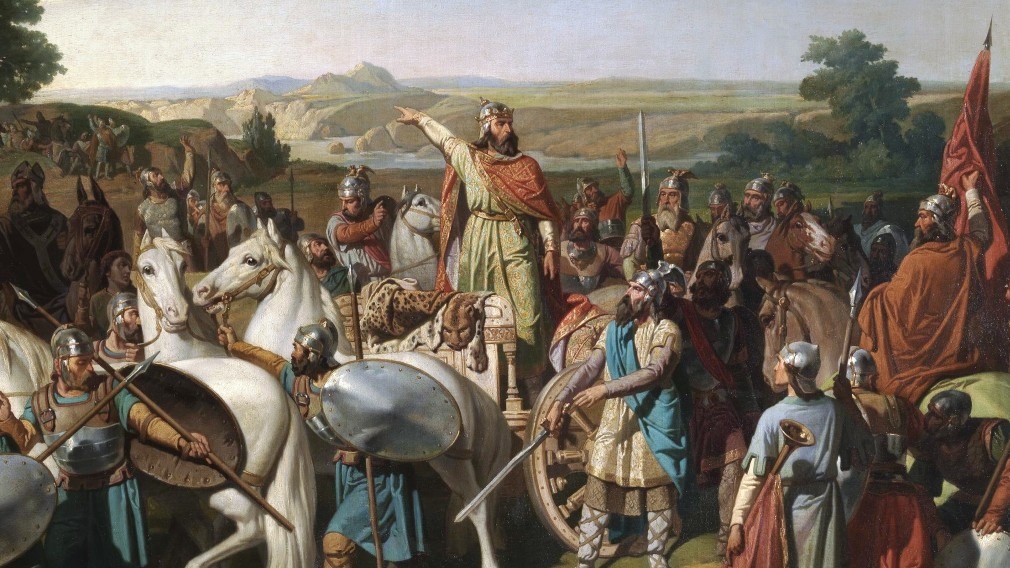
The christian or Western powers, in the form of the Byzantine Empire (amputated) and the Visigothic Kingdom (annihilated), had come to thoroughly understand the meaning of the word jihad. Afterward, the Arabs went over the Pyrenees mountain range and descended into the southern parts of Gaul (roughly present-day France).
They clashed heavily with the Franks living there. The confrontation decided the fate of Western Europe for ages to come.
Disclosure: we work hard to provide you with exclusive medieval reports and guides. To make the Middle Ages accessible to everybody, we’d like this information to remain FREE. Therefore, some of the links below are affiliate links, meaning – at no additional cost to you – we will earn a small compensation if you click through.